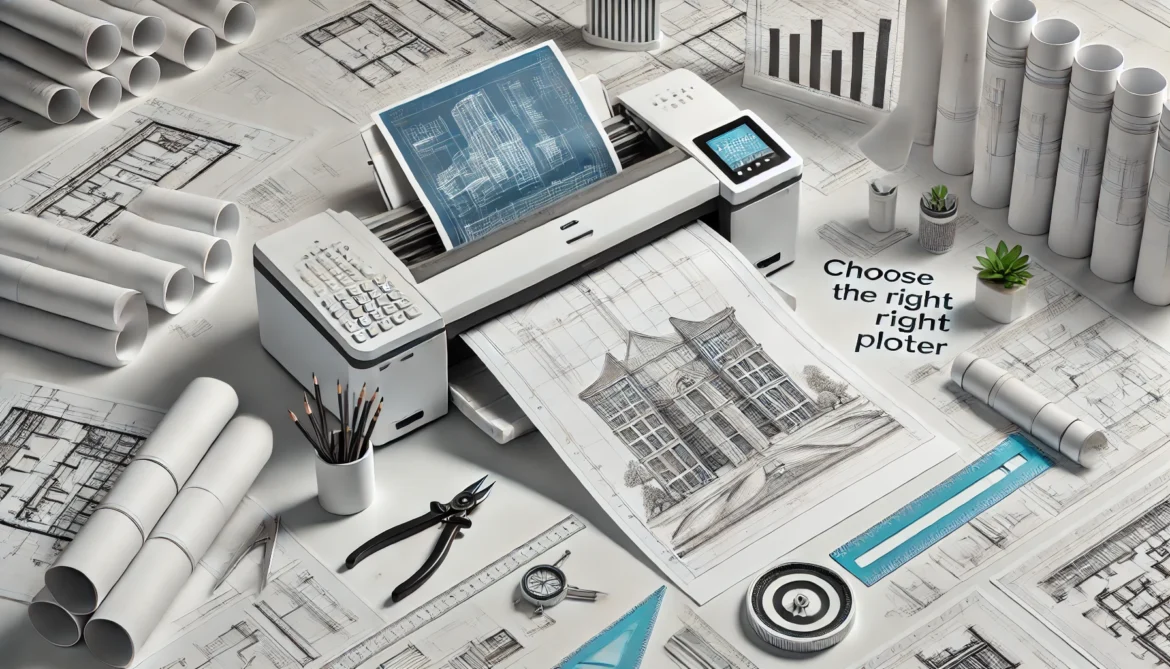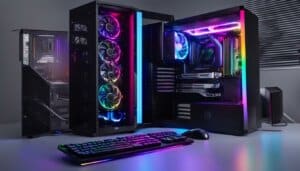When selecting a large-format printer, architects must ensure it aligns with their professional needs. From printing detailed blueprints to visualising complex designs, large-format printers, also known as plotters, play a critical role in bringing architectural projects to life.
Why Professionals Should Prioritise Choosing the Right Plotter
Architects need the right tools to deliver high-quality results. A plotter is more than just a printer—it can streamline workflows, improve design presentations, and enhance project accuracy. When architects invest in the different type of plotters, they invest in their work’s efficiency and precision. Professionals must choose one that aligns with their project needs and operational demands. The right selection can boost productivity, reduce delays, and help professionals easily meet tight deadlines. So, how do you choose the best plotter for your work? Let’s break down the factors that will guide you in making an informed decision.
Media Compatibility and Versatility
One of the first things to consider is its ability to handle different media types. Architects often need to print on more than just standard paper. From bond paper to vinyl and even fabric, the right device should offer versatility in the type of materials it can print on. This flexibility allows for a broader range of presentation formats and ensures you can use the printer for various project needs.
Print Resolution for Precision
Architects rely on precise and clear lines in their work, making print resolution a critical feature. A plotter’s resolution is measured in dots per inch (dpi), and higher resolutions result in more detailed prints. Choosing one that offers a high dpi for clear, sharp images and drawings is essential.
Clarity is non-negotiable for architectural designs, and a plotter with a minimum of 1200 dpi is a good starting point. The high resolution ensures that even the finest details in technical drawings are crisp and easy to read, which is crucial when creating accurate plans.
Printing Speed and Efficiency
Time is always a factor in architectural firms, and having a plotter that balances speed and quality is essential. When evaluating plotters, consider their printing speed, measured by how many large-format pages the machine can print per minute or hour. A faster device allows for quicker project turnarounds, especially when printing multiple large documents simultaneously. While speed is essential, it should not compromise the quality of your prints. Look for one that offers fast printing without sacrificing precision, ensuring your work is efficient and accurate.
Size and Workspace Requirements
Architectural firms vary in size, as do the spaces available for plotters. Before purchasing a plotter, it’s essential to assess your available workspace and ensure the plotter fits comfortably. These come in various sizes, and some can take up much room. Measuring your space beforehand will help you avoid crowding and ensure smooth workflow. Compact models are available for smaller spaces, while larger firms might benefit from bigger plotters that can handle higher volumes of prints. Ensure your plotter fits your work environment while leaving room for accessories like paper rolls and ink storage.
Ease of Use and Maintenance
A plotter that is easy to operate and maintain is essential for avoiding downtime. Architects are often busy managing multiple tasks, so the last thing you want is a printer that is difficult to operate or requires constant attention. Look for one with intuitive software that allows you to send prints quickly and easily manage settings.
In terms of maintenance, some plotters offer automatic cleaning features and efficient ink management, which help reduce the need for frequent intervention. Choosing a low-maintenance plotter allows you to focus more on your architectural projects and less on troubleshooting printer issues.
Cost Considerations and Long-Term Value
While initial cost is a factor, considering long-term value is also essential. Consider factors such as ink efficiency, media costs, and maintenance requirements. Some plotters use ink more efficiently than others, which can result in significant savings over time. Additionally, one with advanced features like faster printing speeds, higher resolution, or automatic adjustments may seem like a more considerable investment upfront. Still, it can help you save time and reduce reprints, improving efficiency.
Choosing the right device from the different type of plotters will directly impact the quality and efficiency of your architectural work. Architects can select one that meets their needs by focusing on essential factors. Investing in a reliable and versatile plotter can help bring architectural visions to life with precision, ensuring each project is printed to perfection. Carefully evaluating the options ensures you choose the best device for your workflow. A well-chosen plotter will enhance both productivity and the presentation of your designs.









